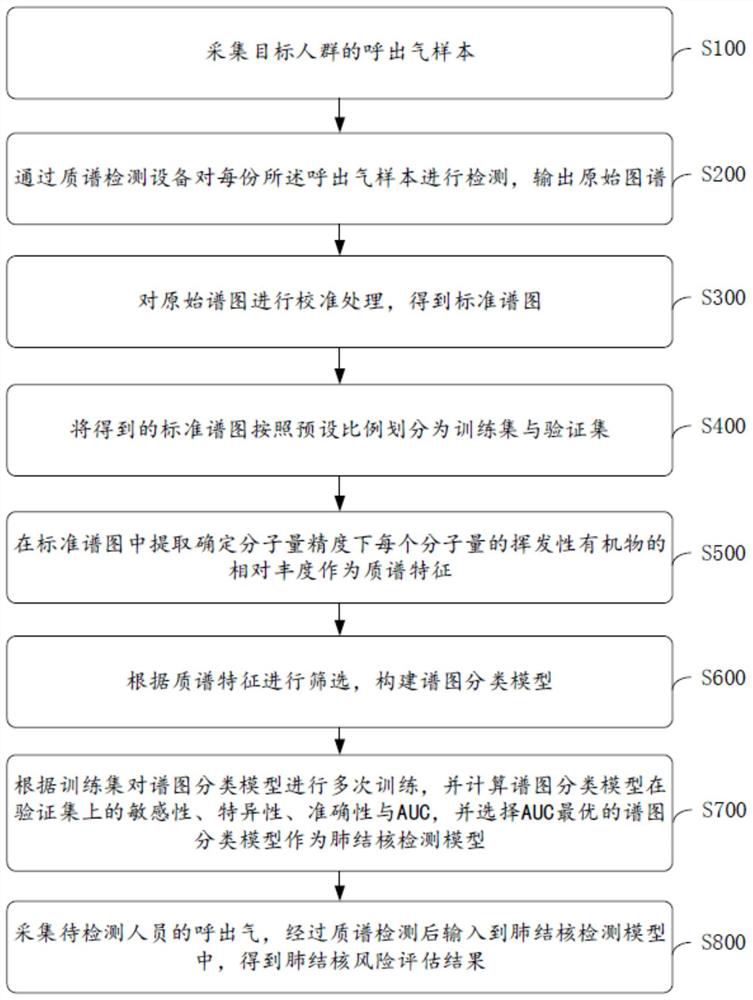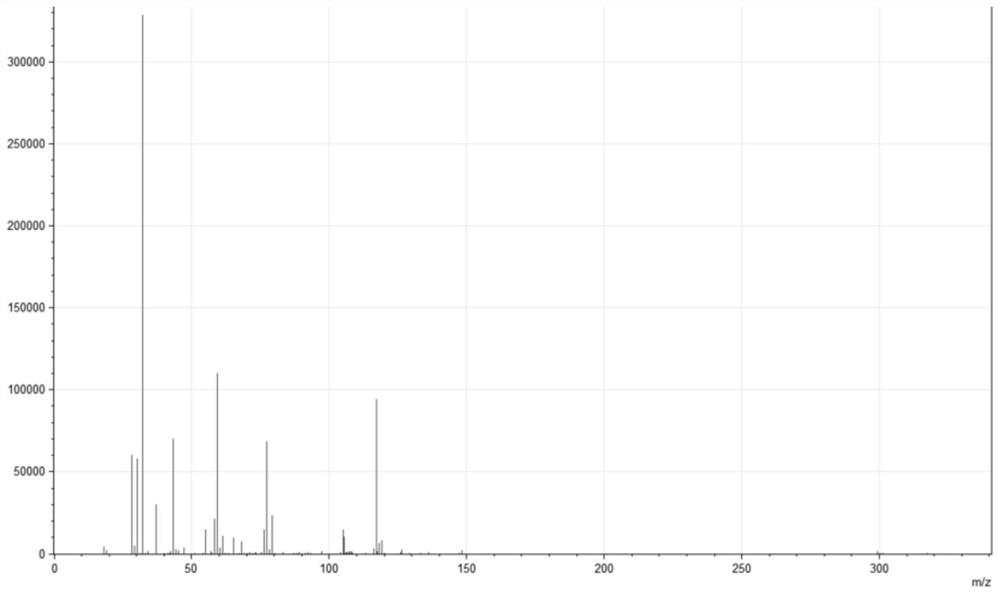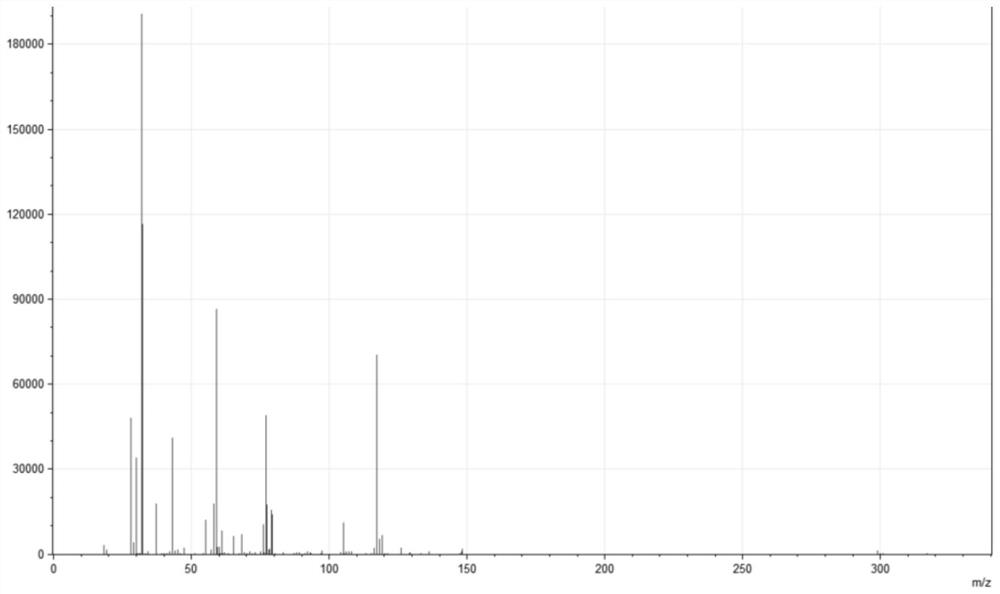Pulmonary tuberculosis risk assessment method and system based on exhaled gas mass spectrum detection
A technology for risk assessment and pulmonary tuberculosis, applied in measurement devices, material analysis by electromagnetic means, instruments, etc., can solve the problems of speed, convenience, cost, insufficient detection conditions, low detection limit of tuberculosis detection technology, and fast detection speed, etc. Achieve the effect of fast detection speed, high sensitivity and high resolution
- Summary
- Abstract
- Description
- Claims
- Application Information
AI Technical Summary
Problems solved by technology
Method used
Image
Examples
Embodiment 1
[0067] In Embodiment 1 of the present invention, a tuberculosis risk assessment method based on exhaled mass spectrometry detection is provided, which is used to detect exhaled breath, and based on the detected mass spectrometry data, the detection and evaluation of pulmonary tuberculosis is realized through artificial intelligence technology.
[0068] like figure 1 As shown, the method for assessing the risk of pulmonary tuberculosis based on exhaled gas spectrum detection includes the following steps S100-S800.
[0069] Step S100, collecting exhaled breath samples of the target population; wherein, the target population includes a preset number of clinically confirmed tuberculosis patients and subjects who are not infected with tuberculosis.
[0070] In this step, a certain number of patients with clinically confirmed tuberculosis and subjects not infected with tuberculosis can be recruited, and exhaled breath samples collected by polymer material air bags with low exudation...
Embodiment 2
[0112] (1) Obtain a pulmonary tuberculosis detection model based on the above-mentioned steps S100-S700 (being a pulmonary tuberculosis binary classification model), and then according to steps S901-S902, the features selected in the pulmonary tuberculosis binary classification model are determined according to their weight and contribution in the model by Sort from high to low, get the sorting, and get the ranking list of the importance of various compounds (ie, volatile organic compounds) in the exhaled breath to the detection of pulmonary tuberculosis.
[0113] (2) Select the characteristics of the top 5, top 10 and top 20 compounds respectively based on the training data set corresponding to the tuberculosis detection model determined in the above steps, and train three random forest binary classification model models, respectively defined as: model-5, model-10, model-20.
[0114] (3) Perform tests on the subjects obtained in step S800 in Example 1, and also extract the ch...
Embodiment 3
[0118] (1) Obtain a pulmonary tuberculosis detection model based on the above-mentioned steps S100-S700 (being a pulmonary tuberculosis binary classification model), and then according to steps S901-S902, the features selected in the pulmonary tuberculosis binary classification model are determined according to their weight and contribution in the model by Sort from high to low, get the sorting, and get the ranking list of the importance of various compounds (ie, volatile organic compounds) in the exhaled breath to the detection of pulmonary tuberculosis.
[0119] (2) According to the published relevant literatures based on GC-MS (gas chromatography-mass spectrometry) detection of exhaled breath, select the characteristics of the number of molecules corresponding to the potential compounds that have been discovered, and use them and the characteristics of the top 10 compounds as the common features.
[0120] (3) Based on the training data set corresponding to the tuberculosis ...
PUM
 Login to View More
Login to View More Abstract
Description
Claims
Application Information
 Login to View More
Login to View More - R&D
- Intellectual Property
- Life Sciences
- Materials
- Tech Scout
- Unparalleled Data Quality
- Higher Quality Content
- 60% Fewer Hallucinations
Browse by: Latest US Patents, China's latest patents, Technical Efficacy Thesaurus, Application Domain, Technology Topic, Popular Technical Reports.
© 2025 PatSnap. All rights reserved.Legal|Privacy policy|Modern Slavery Act Transparency Statement|Sitemap|About US| Contact US: help@patsnap.com



